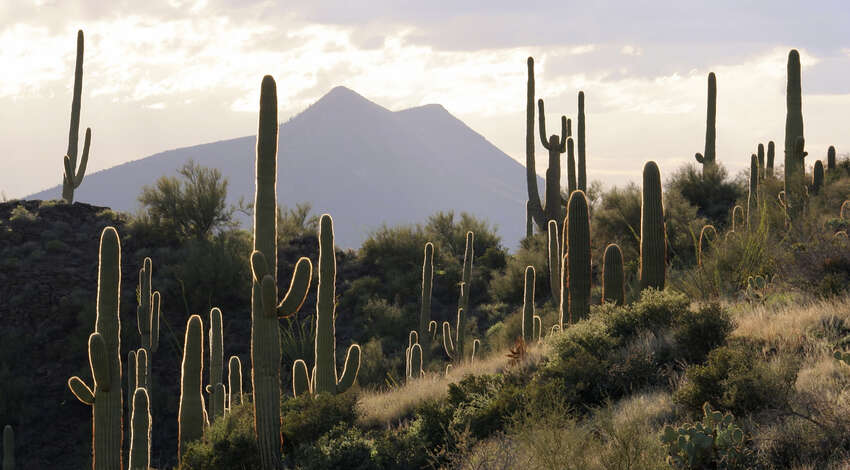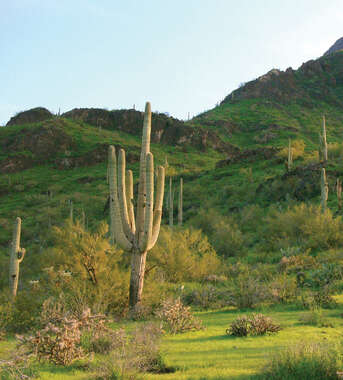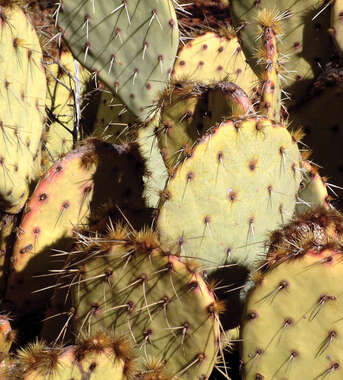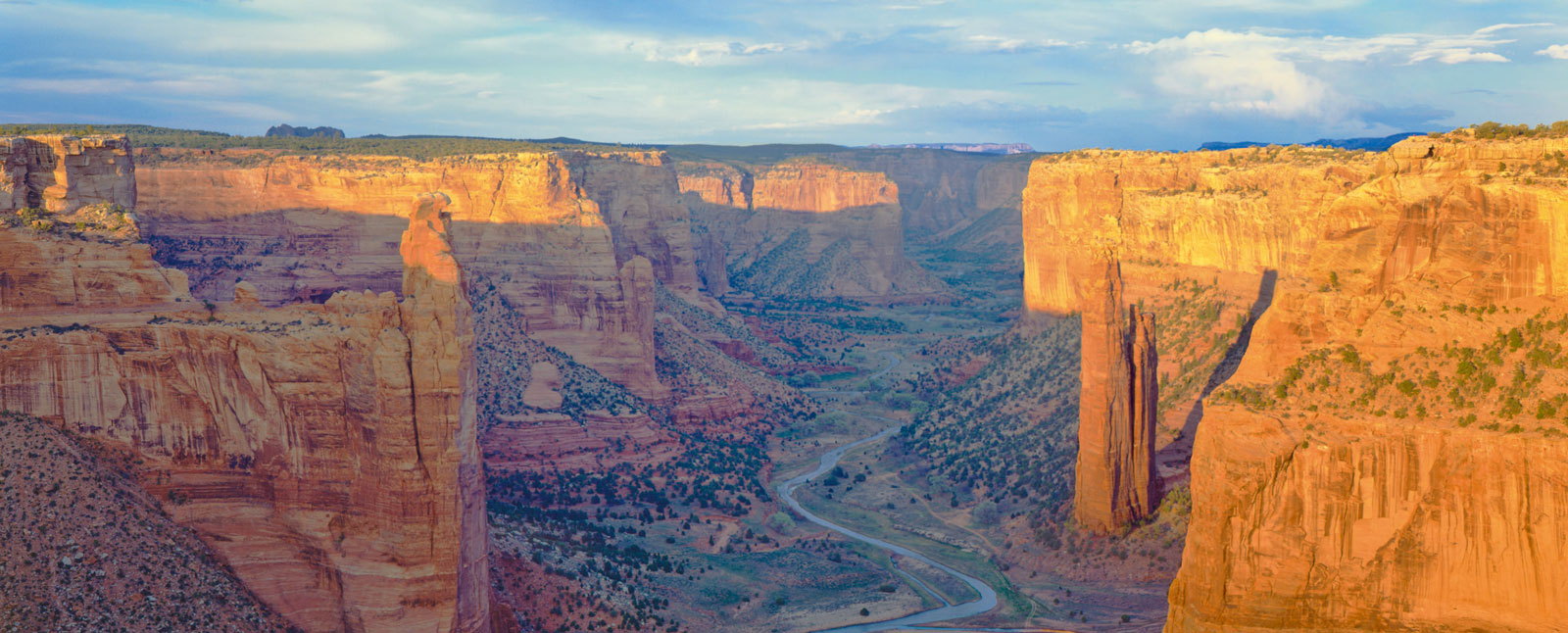An Eye-Opening Walk Through the Desert Botanical Garden in Phoenix
- Road Scholar Nancy Monson was pleasantly surprised by all she saw and learned about at the Desert Botanical Garden in Phoenix, Arizona.
- Learning from an expert horticulturalist, Nancy explored the many different types of cacti and their unique features, including the saguaro cactus and the prickly pear cactus.
- Nancy discovered a new appreciation for the plants and habitats of the deserts of the American Southwest.

I’ve lived in the Northeast my whole life, and my idea of a garden is lush green lawns, manicured beds and colorful flowers.
That means I am initially unsure when I visit the Desert Botanical Garden in the Sonoran Desert of Phoenix, Arizona. This garden is a highlight of Road Scholar’s Signature City Phoenix-Scottsdale program, and it’s unlike any other I’ve ever seen. The website proclaims that 50,000 desert plants are nestled amidst the garden’s red rocks. I get the sense of scale, but frankly, many of the plants here just look kind of dead to me.
How wrong I am! It turns out there is a wondrous secret life in the desert, and an incredible and diverse universe of plants, insects and animals that exists beneath the stark, dusty surface.
In fact, after hearing a lecture by a horticulturist, I am fascinated by the ways in which desert plants have evolved to store water and nutrients so they can survive and thrive in the hot, dry conditions of the desert, and for the ways in which they are used by animals for food and water.
Sonoran Desert Cacti
The most famous cactus found in the Sonoran Desert and artfully placed around the botanical garden is the saguaro cactus. It’s so synonymous with the desert that you probably recognize its unique tall, thin shape and upturned arms from cartoons and photographs.
Among the fascinating facts I learn are that the saguaro cactus can reach a height of 50 feet above ground, making it the largest cactus found in the United States, with roots that can extend 100 feet below ground. Its lifespan reaches upwards of 200 years, and it only starts to grow arms when it’s 75 to 100 years old. The trunk and arms are notable for having ribs, which enable the plant to expand to store water; this is what helps the saguaro survive in the very hot (over 100o F) and dry desert.
Another well-known cactus I learn about is the teddy bear cholla, a three-foot tall plant with fat, white, spiny branches shooting out on either side. The name suggests you might want to hug one of these plants because they look soft and welcoming, but that’s a really bad idea — they have hundreds of dense, sharp little prickers that will stab you wherever they can find an ounce of flesh. And once lodged, these barbed stingers do not want to come out.
The inside of the stems is another story: It’s pulpy, moist and light green in color — and apparently tastes something like a cucumber. The flesh of the cholla cactus is chock-full of water and electrolytes, which desert animals consume to stay alive during the long periods of drought.
Another ubiquitous cactus is the prickly pear, which, as its name suggests, has tiny, barbed spines. The flowers of this cactus are called tunas and can be red, orange or yellow. The flowers are nutritious, with a sweet and tart taste that makes them a popular addition to cocktails, desserts, syrups and jams.
Taking My Time
As I wander the garden’s five thematic trails, I stop to truly examine the wide breadth of plants and wildflowers that exist in the desert landscape and appreciate their unique beauty. Whereas before I would have half-jogged through the garden, thanks to hearing the horticulturist’s talk, I will never look askance at a cactus again.
The lesson I learn in my sojourn through the Sonoran Desert Botanical Garden is that there’s often so much more to an experience or environment than meets the eye. All I have to do is slow down… and now, in my 60s, I finally seem to have the time, patience and stillness of mind to do just that.
Road Scholar offers a program to Phoenix and neighboring Scottsdale that includes a visit to the Desert Botanical Garden along with Andrew Lloyd Wright’s winter home Taliesin West, the Phoenix Art Museum, the Musical Instrument Museum, the Western Spirit Museum and the Heard Museum (featuring Native American history and culture). Road Scholars stay in Old Town Scottsdale, a charming walkable destination for Southwestern-themed shops, galleries, restaurants and nightlife, for the duration of the program.



